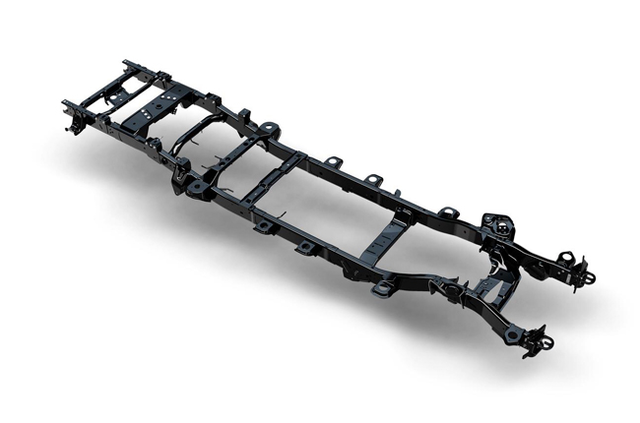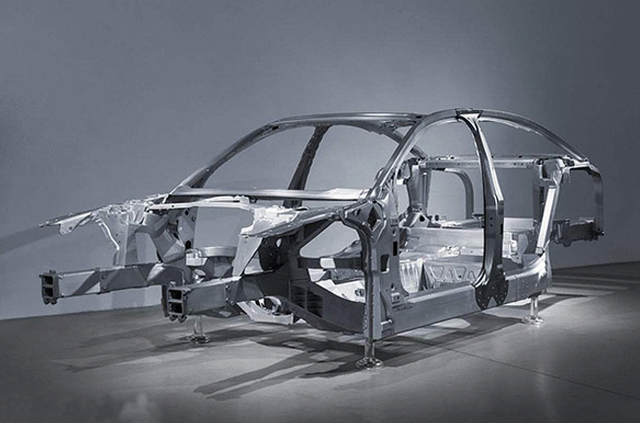
Over the years, the automotive industry has shown drastic developments. Vehicle segments have expanded with the introduction of modernized concepts. For example, an SUV before like the Ford Explorer is now considered a crossover. It’s a bit mind-boggling, we must admit. However, the idea is simple and we’re here to talk you out of your uncertainty.
The answer lies in the chassis

So, why do carmakers have to make it complicated and invent a new term such as crossover when in appearance, it just looks like an SUV? Honestly, it’s as simple as this: SUVs are built on a truck’s chassis, which is also known as ladder frame, while crossovers are built using a car’s platform.
Example:
- The Ford Everest is a midsize SUV, while the Explorer is a midsize crossover.
- The Toyota RAV4 is a compact crossover, while the Fortuner is a midsize SUV.
- The Honda CR-V is a compact crossover, and so are the HR-V and the BR-V, which are both subcompact crossovers with the latter having seven seats.
SUVs are constructed by marrying the ladder frame to a separate body. Meaning, the chassis and the vehicle body are two completely separate parts. Body-on-frame construction is originally utilized by trucks, which is why SUVs are also called enclosed trucks in other places. The ladder frame is made from reinforced steel to make them sturdy enough to resist torsion.

Meanwhile, cars and crossovers use what is called a unibody frame as its base. Unibody, or unit body and short for utilized body, is a product of joining the body, platform, and the chassis, forming one skeleton that takes the shape of the actual car. Manufacturers uses high-strength steel to make them durable and light at the same time. We all know what being light means: good fuel economy.
To off-road and not to off-road?

Knowing that SUVs and crossovers are constructed using two entirely different methods, there are boundaries. SUVs are known for having a rigid and durable structure, while at the same time has taller riding height compared to vehicles using unibody frames. That, plus huge wheels, extra-strong structure, and heavy-duty suspensions make SUVs one of the few choices when it comes to off-roading – other than a pickup truck and a buggy, of course.
Also, body-on-frame structures are better in handling torsion as the metal of the ladder frame are sturdier and heavier. On the other hand, a unibody is made up of thin molded sheets of steel that, despite being described high-strength, can’t handle high levels of stress caused by off-roading. This is why it isn’t ideal to bring your crossover to the countryside and just go wild with it. Of the two, SUVs are the way to go when you want to seek extra thrill.
Driving dynamics

When it comes to driving, SUVs and crossovers differ a lot. Since SUVs are higher than crossovers, they also have higher center of gravity. This means they have more tendency of having more body roll at tight sudden turns.
Crossovers are compact and lower with their car-based platforms for better handling in sharp narrow turns, city traffic, or even mountain passes.
If that’s the case, what about vehicles like the Suzuki Jimny then? As we’ve already said, the main answer lies within the chassis. The Jimny may be small—even smaller than existing crossovers—but its construction is still body-on-frame, which makes it somehow unique and a full-fledged SUV.
Latest Features
-
The 6 things every Ford Ranger must pass before it leaves the factory / Featured Article
Every Ford Ranger, from the base model to the Ranger Raptor, goes through a full inspection process before it leaves the factory. This includes six steps that make sure it’s ready to drive a...
-
Which GAC AION EV is best for your everyday lifestyle? / Featured Article
The GAC AION lineup has something for everyone, maybe you're after space, speed, or just a smooth city drive. Here's a quick breakdown of which model might work best for your day-to-day life...
-
The AutoDeal Awards 2024: Celebrating excellence in the auto Industry / Featured Article
The AutoDeal Awards 2024: Celebrating excellence in the auto Industry
Popular Articles
-
Cheapest cars under P700,000 in the Philippines
Jerome Tresvalles · Sep 02, 2024
-
First car or next car, the Ford EcoSport is a tough package to beat
Jun 18, 2021
-
Car Maintenance checklist and guide – here’s everything you need to know
Earl Lee · Jan 12, 2021
-
Most fuel efficient family cars in the Philippines
Bryan Aaron Rivera · Nov 27, 2020
-
2021 Geely Okavango — Everything you need to know
Joey Deriquito · Nov 19, 2020
-
Family cars in the Philippines with the biggest trunks
Sep 20, 2023
-
Head to head: Toyota Rush vs. Suzuki XL7
Joey Deriquito · Oct 28, 2020
-
Why oil changes are important for your car
Earl Lee · Nov 10, 2020
-
2021 Kia Stonic — What you need to know about it
Joey Deriquito · Oct 16, 2020
-
Top 7 tips for buying a used car in the Philippines
Joey Deriquito · Nov 26, 2020



